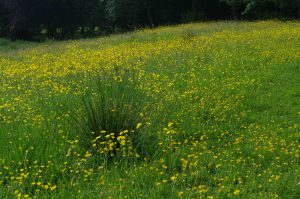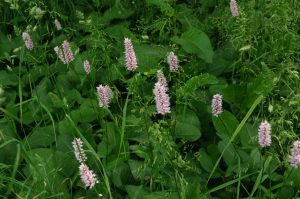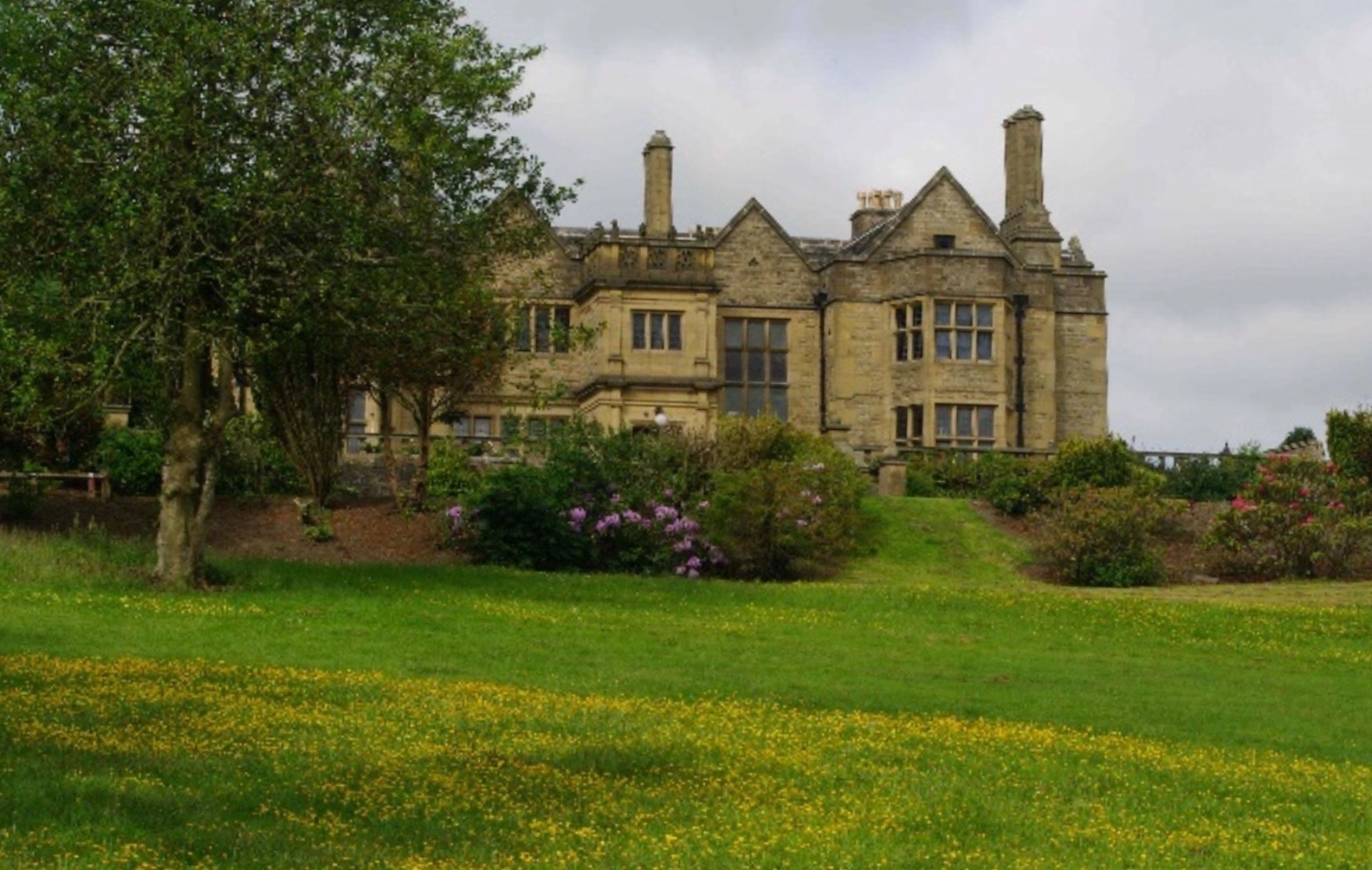A walk through Haworth Park in early summer enchants the soul and the senses with the profusion of wild flowers. Interrupted only by birdsong and the antics of the squirrels, the Haworth’s peaceful surroundings are a haven for wildlife and a tranquil respite from life’s daily hustle and bustle. Jean Emmett takes a walk through its flora.
The Haworth presides majestically over the scene, as nature races against our efforts to tame it, and large swathes of buttercup and daisy peep through the lawns before their next trim has chance to arrive.

Wild flowers are encouraged to grow naturally along the margins of the park and a total of around 50 different wild flower species can be seen today. Young trees proliferate around these borders and the many species showing early shoots include the oak, the ash and the holly tree, all self-propagating from their wooded surroundings.
The great field below the Haworth is dense with buttercups just now; simply delight in the profusion of their yellow, yolk-like heads as you wind your way along impromptu footpaths made through the grasses by walkers and by children playing.

Many of the wild flowers will be familiar to most visitors, but alongside the better known species are large patches of yellow pimpernel, bistort and pink purslane. The vigour of nature at this time of year can amaze us with its ability to take over and fill every nook and cranny with so many marvellous species.

Along the wall bordering Manchester Road, the beautiful bistort and pink purslane nestle alongside the familiar crowns of cow parsley. The wild flower drifts provide a haven for many insects, not least, of course, the bees, busy visiting to collect their nectar.
And, complementing the wilder areas, we can’t overlook the formal rhododendron plantings, made so many years ago, and still providing a glorious show.



